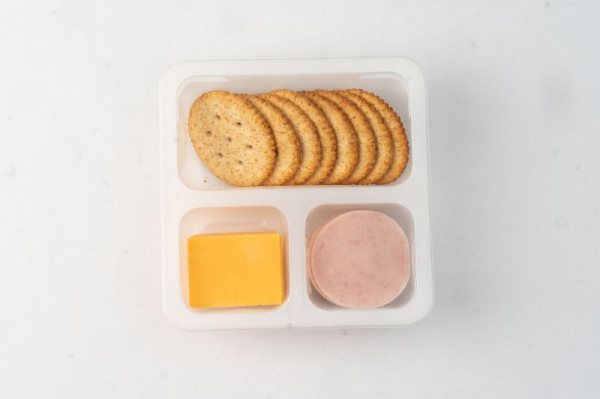Editor’s Dr. Hasan Merali, an associate professor in the Department of Pediatrics at McMaster University and author of "Sleep Well, Take Risks, Squish the Peas: Secrets from the Science of Toddlers for a Happier, More Successful Way of Life," shares his personal insights in this piece. While the memories of Lunchables may evoke nostalgia, Dr. Merali sheds light on the nutritional concerns surrounding these childhood favorites.
As a 10-year-old, I relished the ritual of unwrapping a Lunchables, assembling my own miniature sandwiches from crackers, cheese, and deli meat. The taste was satisfying, yet unbeknownst to me and my mother, the repercussions of consuming such ultra-processed foods were not fully understood in the mid-1990s. Since then, nutritional science has made significant strides.
So why, in light of this progress, are Lunchables still part of the National School Lunch Program (NSLP)? Consumer Reports' evaluation of two Lunchables kits distributed in schools revealed higher sodium levels compared to those sold in stores. Despite claims of being an "excellent source of protein," these kits do not equate to healthfulness. The presence of preservatives like sodium nitrite underscores concerns about their nutritional value.
Kraft Heinz, the manufacturer of Lunchables, asserts efforts to improve their nutrition profile, citing partnerships with Fresh Del Monte for fruit options and a reduction in sodium content. While they maintain adherence to safety standards, questions persist about the healthfulness of their products.
It's crucial to acknowledge the significance of providing free or low-cost meals to millions of children through the NSLP, a commendable initiative overseen by the USDA since 1946. With over 30 million beneficiaries, this program addresses the needs of many in food-insecure households. Comparatively, countries like Canada lack a national food program for children, despite excelling in other public health measures.
While the NSLP serves a vital role, it's imperative to scrutinize the nutritional content of the meals provided, ensuring they align with evolving dietary guidelines. As we navigate the intersection of nostalgia and nutrition, we must prioritize the health and well-being of future generations.
While the National School Lunch Program (NSLP) serves as a vital resource for millions of children, there's room for improvement in the quality of meals provided. Allowing Lunchables into the NSLP menu isn't a stride forward; it's a step back. Would you opt for a Lunchables yourself? These pre-packaged meals fall into the category of ultra-processed foods (UPFs), laden with chemical additives like artificial flavors—case in point, the "smoke flavor added" to turkey and cheddar Lunchables served in schools.
Consumer Reports has questioned the suitability of Lunchables for school menus, and research echoes these concerns. A study in the British Medical Journal linked increased UPF consumption to elevated risks of obesity, cardiovascular disease, depression, and cognitive decline. Conversely, reducing UPF intake among children can notably combat obesity.
Aligning the NSLP with the latest Dietary Guidelines for Americans (DGA) poses a challenge for the USDA, yet progress is underway. Research published in the American Journal of Clinical Nutrition highlights the potential benefits of implementing DGA standards, including significant reductions in body mass index (BMI), blood pressure, and long-term prevention of thousands of deaths from chronic diseases, with substantial cost savings.
Enhancing the nutritional quality of children's meals not only fosters better health outcomes but also mitigates dietary disparities across income and race. We've witnessed positive changes before, notably with the 2010 Healthy, Hunger-Free Kids Act, which elevated nutrition standards in school meals. Notably, adherence to higher nutritional standards also correlates with reduced food waste, as evidenced in a study published in Childhood Obesity.
As we strive to nourish our children with wholesome, nourishing meals, let's ensure that every bite contributes to their well-being and future prosperity.
While recent changes to school nutrition standards by the USDA are commendable, there's still much more we can do to align the food we provide our children with current dietary guidelines. While the current plans aim to reduce added sugars and sodium while increasing whole grain consumption, the issue of ultra-processed foods (UPFs) remains largely unaddressed.
It's time to explicitly incorporate language around UPFs into national dietary guidelines, as other countries have done. This is a crucial step not only for children but for everyone's health. Countries like Colombia have taken proactive measures, implementing taxes on UPFs, resulting in significant reductions in purchases. However, challenges persist, as highlighted by reports of marginal food security among Colombian households.
Chile's approach to protecting children from UPFs sets a remarkable example. They've banned the sale and distribution of UPFs in schools and restricted advertising of these products to children, even prohibiting the use of cartoon characters and mascots in UPF promotions. This demonstrates a true commitment to child advocacy and public health.
While implementing taxes, school cafeteria bans, and advertising restrictions on UPFs may seem distant, we must take the first steps. Incorporating language around UPFs into policy documents is a crucial starting point. Once we identify the problem, we can begin setting targets, much like the USDA did for reducing sugar and salt intake. France's goal of reducing UPF consumption by 20% over three years provides a promising model to emulate.
As the allure of Lunchables fades with the realization of their nutritional shortcomings, it's evident that children need stronger policies and better food options. Let's work towards a future where every child has access to nutritious meals that support their health and well-being.
In conclusion, as we reflect on the state of children's nutrition and the prevalence of ultra-processed foods (UPFs), it's clear that action is needed to safeguard the health and well-being of our youth. While commendable steps have been taken to improve school nutrition standards, addressing UPFs must become a priority in national dietary guidelines. Drawing inspiration from proactive measures taken by countries like Colombia and Chile, we must advocate for policies that reduce UPF consumption, protect children from harmful advertising, and promote access to wholesome, nourishing foods. By taking decisive steps now, we can lay the foundation for a healthier future for generations to come.








![Unmatched Excellence: 30 Years, Zero Lost Bags - The Remarkable Record of [Airport's Name]](/media/k2/items/cache/11d1150d71d7fad2b9b66fe40cd35dcb_M.jpg)



